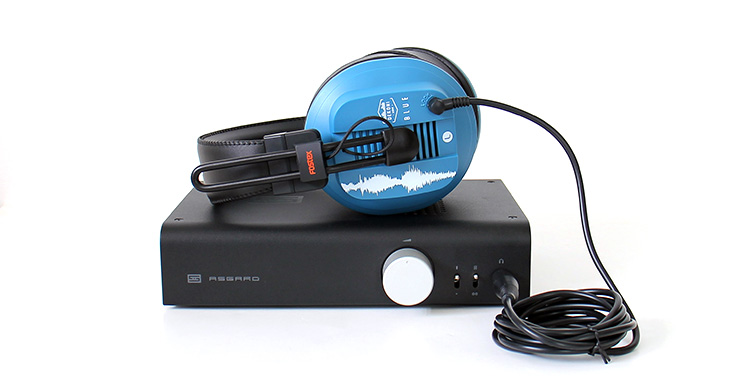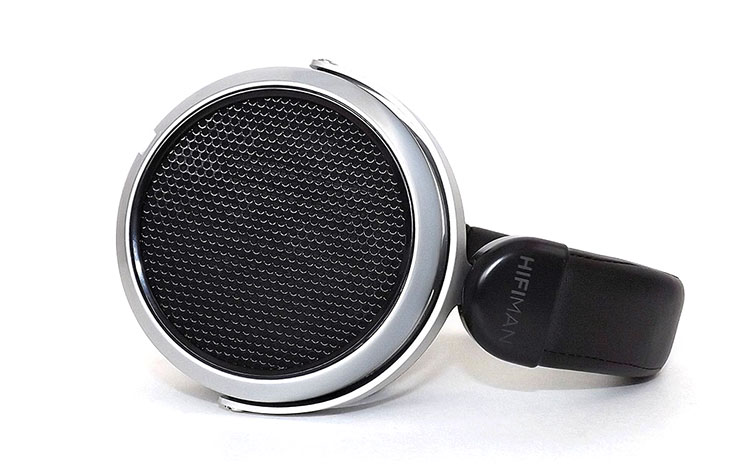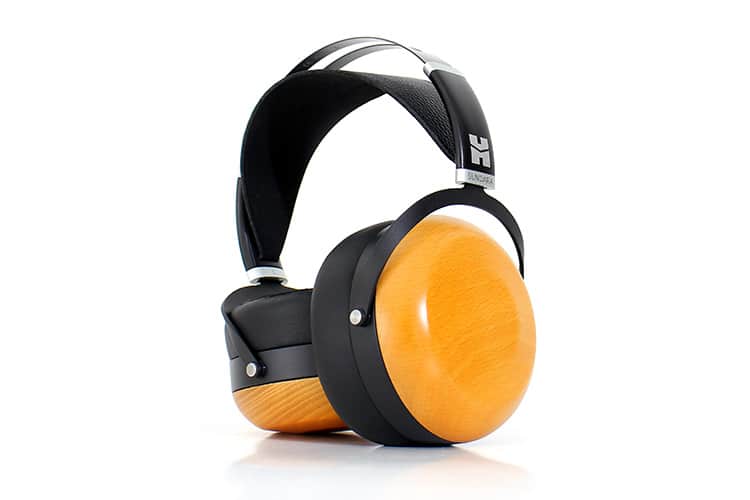Synergy
Efficiency
Be ready to break out the big-boy amp. Of course, you could power them with most dongle DACs and most DAPs but they will not be optimally powered.
Don’t even consider powering them with a single mobile phone. Most do exaggerate as to how inefficient they are but the fact that they’re terminated with a 6.35mm plug should be an indication of where you should use these cans.
My FiiO M11 Pro and even my Shanling M3 Ultra which has less power on tap powered them well but I would not go below that power level. That would have been alieved by some if there was an ability to use their balanced output side.
These facts would not allow me to recommend these cans with a DAP or battery-dependent gear. The volume level would probably be close to max most times and on high gain except if you use a top-tier DAP.
That situation will kill your battery quickly, therefore considering all that plus the long-lever 3.5mm connectivity would ground these to home duty.
They feel most at home in a desktop setup with a powerful amplifier. They play well with some units that are capable of 200mW but feel at home when fed a more robust 5 watts or more for example.
Some have even connected these directly to a speaker amplifier output and obtained great results, insanely so.
Pairings
I could verify a good pairing with a hybrid power Schiit Audio Asgard that produces 5 watts per side on the sole 6.35mm connection.
A high-power single-ended output is what you need with these cans. For that fact, these two components made an almost ideal setup but the Blue also played well with NFCA module amps like the Topping A90 and the L70 off the SE side.
I would also consider running a dongle like the iFi Audio GO Bar or even a Gryphon if you’re hell-bent on going portable.
I did get to use a hip-dac2 and the volume only reached a medium level and left much to be desired far as volume amount and the ability to wake up the party animals out of these cans.
However, they made an excellent pairing with the iFi Audio iDSD Signature. What’s ironic is that they’re both blue.
The one feature that added some welcomed width was the 3D feature, not so much the XBass because it pushed the bass to exaggerated levels.
The biggest irksome feeling I got using the Dekoni Blue arises when you use gear equipped with an SE and balanced output and just knowing you can’t tap into that extra balanced output driveability is quirky, to say the least.
To be honest I’m considering modding my set with a balanced dual plug input mod. A balanced capable Blue is something worthy of thought, agree?
Pad Rolling
I did some pad rolling with the Dekoni Blue to see if there was a possibility of increasing high frequencies and pulling these out of their dark-sounding V-shaped character and they certainly did with almost every pad swap.
What does this mean? It means tweaking time is not over since you could obtain a different sound signature with these by simply changing the pads.
I mostly used the Dekoni line of Elite pads. The Fenestrated and hybrid pads sounded closest to stock but did present a small gain in high-frequency energy. It did lift them from their somewhat dark character but not as much as the suede and Sheepskin variants.
The Sheepskin to me gave me the most gain in high frequencies and they also brought forth some of the midrange frequencies.
The Sheepskin was my favorite because not only was there an increase in upper frequencies, but the soundstage also opened up considerably.
As far as comfort, that prize goes to the Velour variant. They raised the comfort level so, that I was willing to compromise the wider stage obtained with the Lambskin variant.
I did notice a slight increase in snare energy and other similar elements so they tend to cater to the mid frequencies.
Select Comparisons
HIFIMAN HE400se
Price $149.00
Technical
One of Hifiman’s best-selling headphones is the HE400se probably second to the Sundara open back.
They obtained that position because of the dollar-per-performance ratio they offer. You get full planar performance for under 150 which is a budget that only includes a small handful of competitors to choose from.
There are some obvious visible advantages here. For example, the HE400se uses a common dual 3.5mm input set which enables them to use a plethora of aftermarket cables and most Hifiman cables as well. Plus you could go full-balanced.
Design
Although the HE400se seems to use the same headband assembly borrowed from other models, the pads seem to be rather different from let’s say the Pali pads.
They use the same 6-point mounting system as always so pad swapping is fairly easy as long as you have a couple of their mounting rings.
Weight differences to the senses between these headphones seem to be very similar. The clamping force on the Dekoni Blue seems higher but the HE400se seems bulkier.
This could be attributed to the headband cushion since the HE4000se uses a rather stiff padding on top versus the one used on the Dekoni Blue which feels more like a Hifiman head strap used on their high-tier models.
Performance
These two headphones perform very similarly to each other upon a first listen. They both display a warmness and a relaxed upper section although the Dekoni Blue seems to have a meatier high-frequency response that presents each note with more weight behind them.
Both spew detail on par with more expensive models. Dekoni Blue takes the title for the darker-sounding one of the two and there’s more of a V-shaped tonality on the Dekoni Blue. However, it seems the details are more forwardly presented on the HE400se.
Certainly, the bass is more prominent and punchier on the Dekoni Blue. The HE400se is a more neutral-toned headphone on the bottom frequencies but it doesn’t extend as well since it has a downward tilt that starts rather early on the low frequencies. But they have better bass control overall.
There’s an airy presentation on the HE400se in contrast to the not-so-large soundstage presentation of the Dekoni Blue. It seems the source of this character is the larger diaphragm driver on the HE400SE and its open-back design.
Elements seem more distant, further forward. But the generally introverted character of the Dekoni Blue keeps the listener better focused on the music.
HIFIMAN Sundara Closed Back
Price $399.00
Technical
Being a closed-back planar headphone puts these in a similar category to the Dekoni Blue. The Sundara Closed Back uses a more modern design concept in the fact that it uses stealth magnets and a nano-thin diaphragm. But upon closer inspection, their drivers have some similarities.
The Hifiman Sundara Closed Back drivers are smaller variants than usual and closer in size to the RP series drivers.
They also use a similarly fashioned phase plug in front of the magnet assembly that waveguide diffuses the sound before it goes into the ear cups.
Again, the Sundara Closed Back has the slight advantage of being able to go balanced but it’s ironic that the highly efficient headphone could go balanced but not the inefficient one. Oh well.
Design
There’s no doubt that the Beechwood cups are nice to look at but it does add extra cost. I’m not complaining because if the wood adds a nice character to the overall sound quality then the extra cost would be justified.
When it comes to design particulars that affect comfort these two feel similar on the head but the Sundara closed back does have more clamping force.
The same feeling is attributed to the headbands and the similar way they sit on your head plus the softness of the pads also contributes to comfort.
They both use soft and comfortable pads which are hybrid in design. The Sundara Closed Back pads sit between the Pali pads and the HE400se pads far as quality.
Performance
The Sundara Closed Back seems to be better suited for studio use and monitoring over the Dekoni Blue because it has a cleaner output which is another irony.
The bass response contrasts because it has a substantial dip below 50Hz but it simultaneously doesn’t get in the way of the midrange production.
These two cans also contrast in efficiency levels. The Sundara Closed Back could be powered with anything you have. I bet even a Sansa Clip would be able to push them hard enough and they don’t need high power like the Dekoni blue to shine.
Both however can make poor sources sound good. In the case of the Sundara, the lack of high frequencies in poor-quality sources benefits the bass response which is a welcome trait.
The Sundara’s overall sound signature is more detail-oriented and nuanced but is not a fun headphone. I would consider them an analytical type because there is less veil present.
The Dekoni Audio Blue, however, has a higher fun factor level. No equalization is needed either because their punchy and introverted characteristics are inherent. Any more would be too much.
Our Verdict
The Dekoni Audio Blue headphones did not impress me at first but they somehow constantly remained on my desktop and eventually became one of my daily cans. They did so stealthily because they just performed well in many ways and in a no-hassle way.
Just be certain you have a headphone amp hefty enough to power them correctly. These are not cans to go portable and are not to be used with a mobile device alone.
These are cans to rock out on with a high-power desktop setup and the occasional out on the town especially if your gab is blue-themed.
Other than the lack of connectivity and the inability to go balanced, if you’re looking for a fun headphone to listen to, one with further improvement capability and robust enough so you don’t have to handle them with white gloves then give these a try by all means. You could also try your hand at modding which further raises their fun factor.
Dekoni Audio Blue Technical Specifications
- Design Over ear (Circumaural)
- Earcup Style Semi-open-back
- Frequency Response 15 Hz to 35 kHz
- Impedance 50 Ohms
- Sensitivity 92 decibels
- Maximum Power Handling 3000mW
- Weight 315 grams





